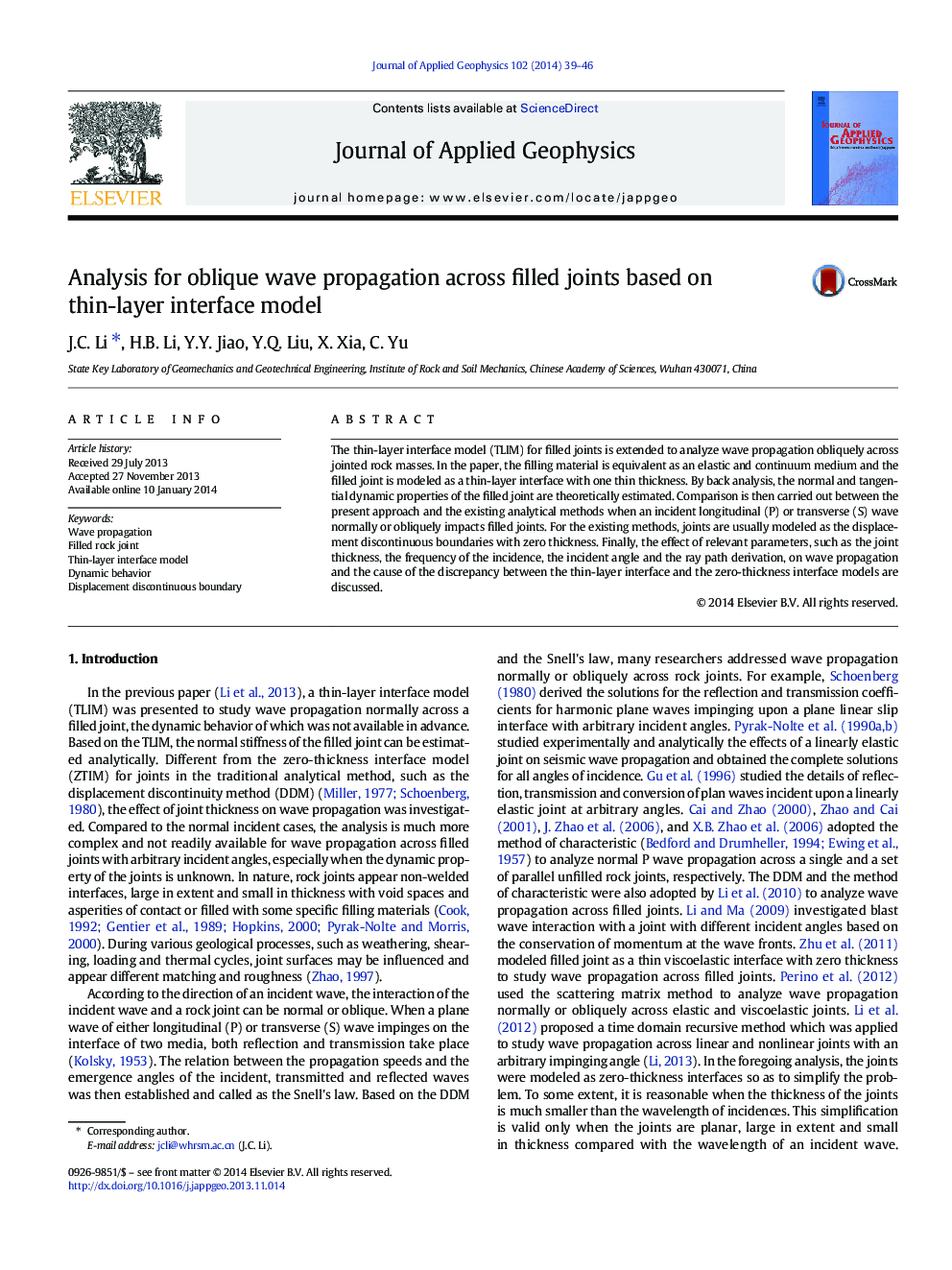| Article ID | Journal | Published Year | Pages | File Type |
|---|---|---|---|---|
| 4740181 | Journal of Applied Geophysics | 2014 | 8 Pages |
Abstract
The thin-layer interface model (TLIM) for filled joints is extended to analyze wave propagation obliquely across jointed rock masses. In the paper, the filling material is equivalent as an elastic and continuum medium and the filled joint is modeled as a thin-layer interface with one thin thickness. By back analysis, the normal and tangential dynamic properties of the filled joint are theoretically estimated. Comparison is then carried out between the present approach and the existing analytical methods when an incident longitudinal (P) or transverse (S) wave normally or obliquely impacts filled joints. For the existing methods, joints are usually modeled as the displacement discontinuous boundaries with zero thickness. Finally, the effect of relevant parameters, such as the joint thickness, the frequency of the incidence, the incident angle and the ray path derivation, on wave propagation and the cause of the discrepancy between the thin-layer interface and the zero-thickness interface models are discussed.
Keywords
Related Topics
Physical Sciences and Engineering
Earth and Planetary Sciences
Geophysics
Authors
J.C. Li, H.B. Li, Y.Y. Jiao, Y.Q. Liu, X. Xia, C. Yu,
